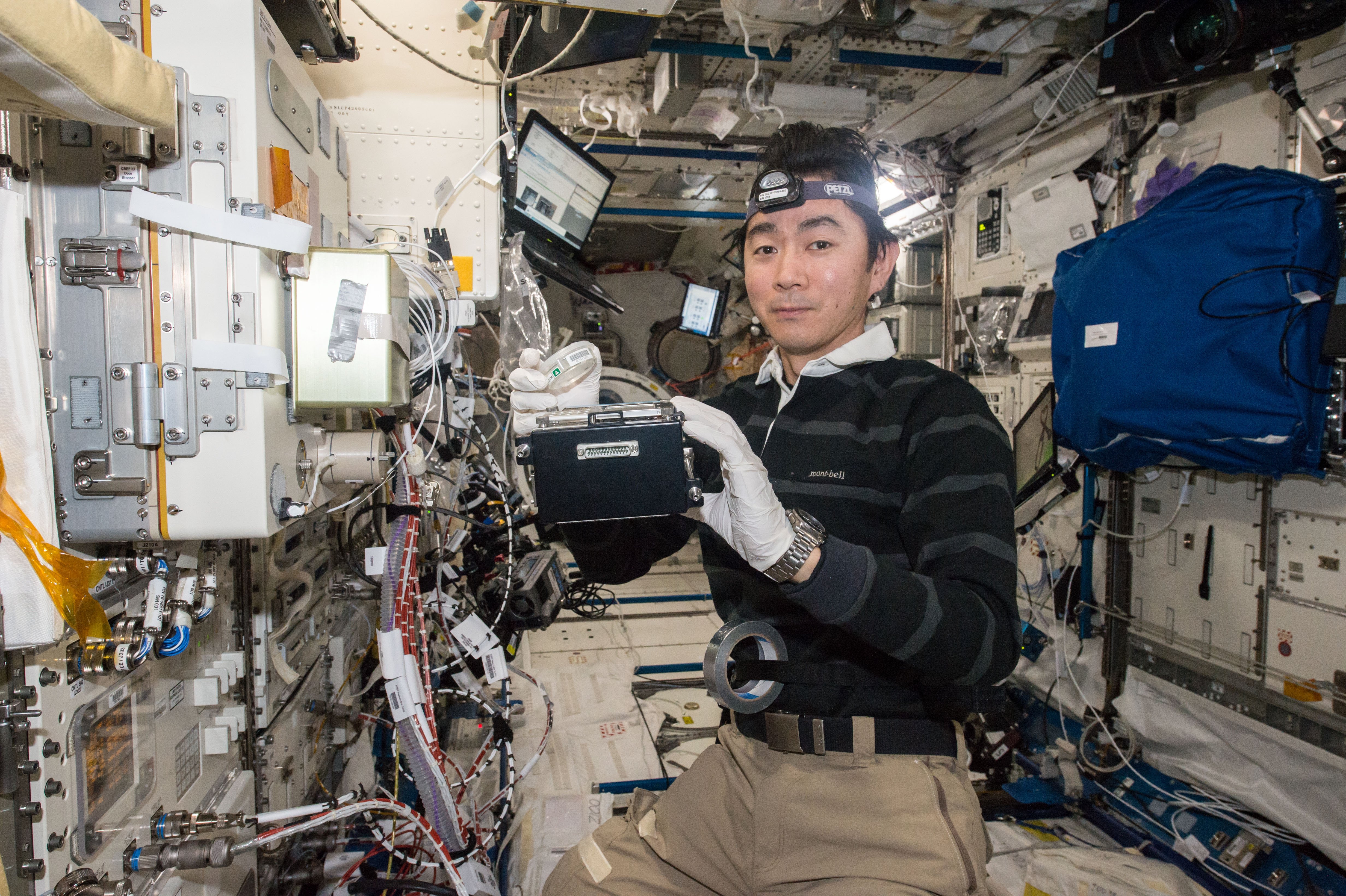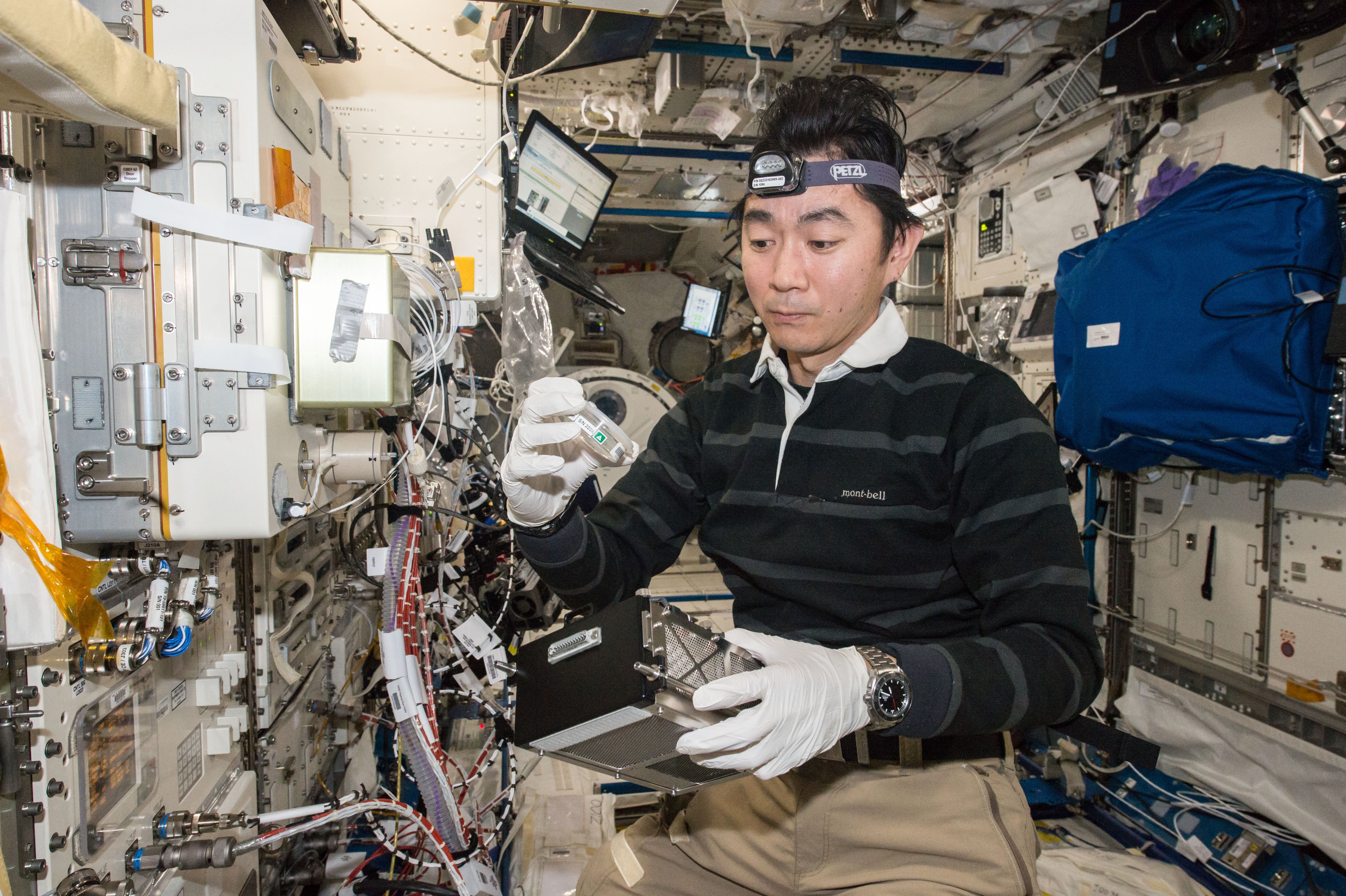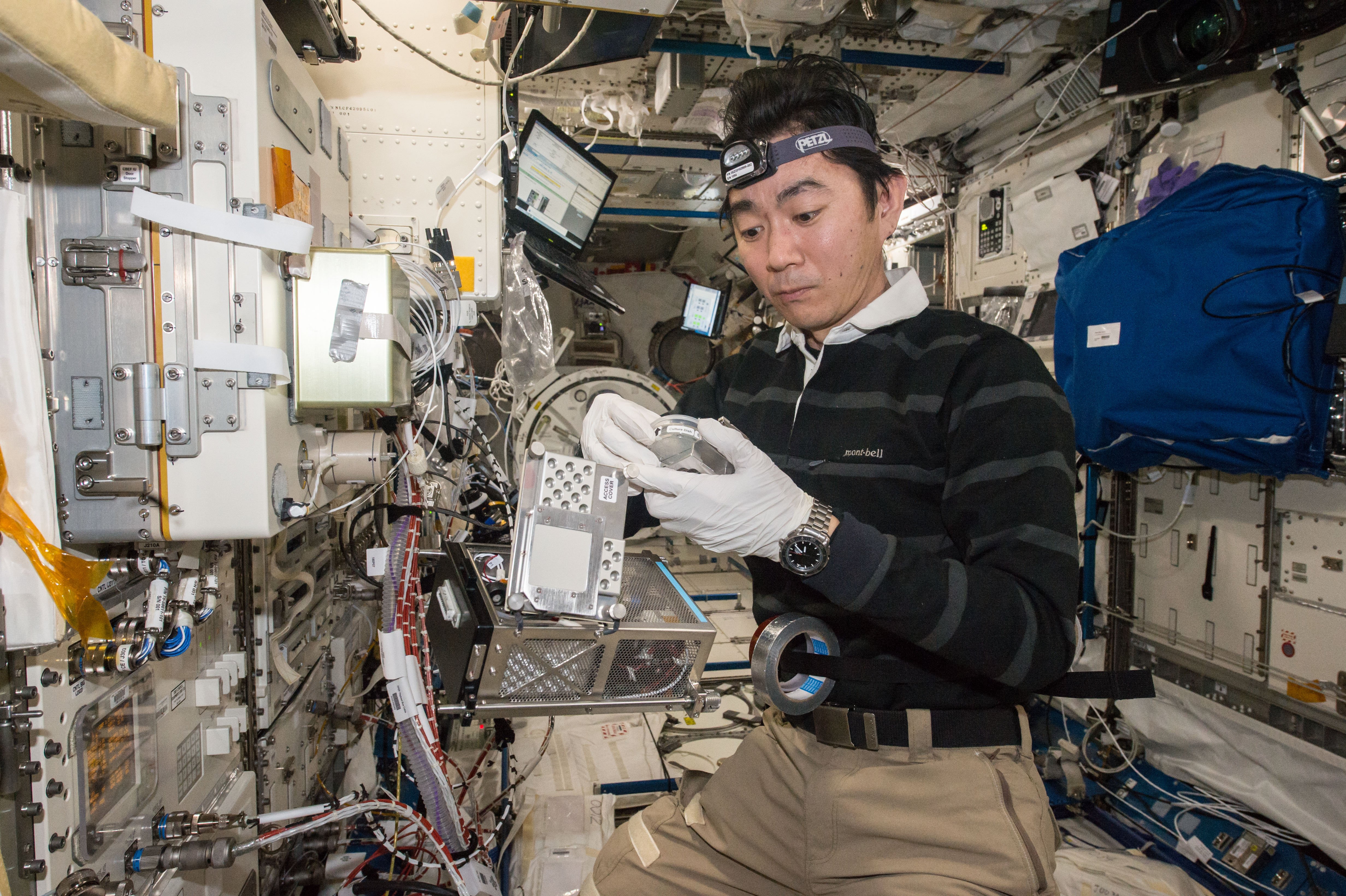- completed
[Plant Gravity Sensing]
Molecular mechanisms of differentiation and formation of the gravity sensing system in plant cells
- Biology and Biotechnology
ISS Science for Everyone
SCIENCE OBJECTIVES FOR EVERYONE
Plants growing on Earth can detect gravity, which enables them to grow their stalks in the opposite direction as their roots. But scientists do not yet understand the chemical process controlling plants response to gravity. Concentrations of calcium in plant cells changes in response to various factors, including temperature and touch, and changes in the direction of gravity when plants grown under 1g condition on the earth, but scientists are not sure whether gravity also affects calcium levels in plants grown in microgravity conditions. Utilization of the micro gravity condition to examine the cellular process of formation of the gravity sensor and the molecular mechanism of gravity sensing (Plant Gravity Sensing) studies whether plants grown in microgravity conditions can sense the changes in the gravitational acceleration, and the concentrations of calcium in plant cells changes.
Experiment Description
RESEARCH OVERVIEW
Plants exhibit cytoplasmic calcium concentration ([Ca2+]c) increases in response to a variety of endo- and exogenous stimuli such as phytohormones, temperature and touch, the mechanisms of which have been extensively investigated. However, few studies have assessed the relationship between [Ca2+]c-increase and gravity stimulation, because gravity is a ubiquitous force and difficult to control on Earth. The details of underlying cellular/molecular mechanisms leading the gravitropic response, especially the sensing machinery for gravity in plants remains totally unknown. Recent preliminary experiments suggest that a mechanosensitive channel, e.g., MCA1, and actin cytoskeleton are involved in a gravity stimulation-induced [Ca2+]c-increase in Arabidopsis seedlings. The hypothesis proposed by researchers is that the amyloplasts (or heavy mass particles) sediment in the direction of the gravity vector, causes tension increases in the actin stress fibers, and it activates the mechanosensitive Ca2+ channels in the cell membrane. These subcellular components (channels and actin fibers) must be assembled and form the gravity-sensing machinery in the subcellular space under 1-g conditions, but it is unknown whether the machinery is assembled under microgravity conditions or not.
This research is needed because it tests the above hypothesis, and the possible assembly of a gravity sensing machinery in a micro-g space envelopment, by performing four experiments as follows: (1) a gravity stimulation induced [Ca2+]c-increase in Arabidopsis seedlings grown in microgravity conditions to clarify whether the gravity sensing machinery can be formed under microgravity or not, (2) image analyses of the subcellular distribution of the mechanosensitive Ca2+ permeable channel candidate protein, MCA1, in root cells of the seedlings grown under the micro-g and the 1-g condition, to examine whether the localization of the mechanosensitive channel is gravity dependent, (3) mRNA contents (including MCA1) in seedlings in the 1-g and microgravity conditions is examined, which can show that the expression of the MCA1 and other gravity sensing related proteins requires gravity, and (4) parabolic flight and whirling arm experiments with the MCA1 knockout and overexpressing seedlings to explore the role of MCA1 in gravity sensing.
This experiment clarifies whether seedlings grown in microgravity respond to the changes in gravity and elevation of [Ca2+]c or not. If the [Ca2+]c does not increase, or the amplitude or the duration of the [Ca2+]c response differs from that of plants grown under 1-g conditions, it can be suggested that the proper assembly of the gravity sensing machinery requires gravity. The analysis of the subcellular distribution of the Green Flourescent Protein (GFP)-labeled mechanosensitive channel candidate protein MCA1 in root cells of the seedlings grown under microgravity may provide the reason for deficient (or modulated) [Ca2+]c response in plants grown in microgravity, e.g., if the mechanosensitive channel is not localized to the cell membrane, the tension changes in the cytoskeleton, and/or cell membrane, may not be transduced to activate MCA1, which induces Ca2+ influx via the channel, and lead to the [Ca2+]c-increase. If the mRNA content of gravity sensing related protein in seedlings is down regulated in plants grown under micro-g condition, it can be suggested that the component of the gravity sensing machinery (e.g., MCA1) is not properly synthesized in plants under the micro-g condition. If the [Ca2+]c-increases in the mutant seedlings of MCA1 (knock out and overexpressor) in ground parabolic flight experiments show the important roles of MCA in gravity sensing, the results of space experiments with those of the ground ones may strongly support the hypothesis that MCA1 is involved in the gravity sensing machinery in plants.
The mechanism where plants sense the gravity vector and regulate their growth direction accordingly, or gravitropism, was first identified nearly 200 years ago by Thomas A. Knight, and was later characterized by Charles Darwin. However, the molecular mechanism of gravity sensing in higher plants is a long-standing question. This research allows the investigation of the process of the assembly of gravity sensing machinery under micro-g, and also to examine the hypothesis of a gravity sensing machinery. Evidence may be obtained in the microgravity research to support the model that the change in the gravity vector is sensed by the mechanism consisting of amyloplast-actin filaments-mechanosensitive channels (e.g., MCA1) super complex subcellular structures.
Media Gallery



Applications
SPACE APPLICATIONS
Future missions to asteroids, Mars, or to deep space require astronauts to grow food. But changes in gravity affect how plants grow, and could affect how many crops they can yield. Understanding the molecular mechanisms that control plants’ gravity response can help scientists develop new ways to grow plants in space. Plant genes could be controlled to respond to increased or decreased gravity conditions, so that plants grow in a manner similar to how they would grow on Earth.
EARTH APPLICATIONS
Plant Gravity Sensing studies the genetic expression and other molecular changes involved in how plants respond to gravity. Understanding this process could lead to new plant varieties that grow in different ways. For instance, plants that respond quickly to gravitational sensing could recover more quickly after collapsing in floods or high winds. In a broader sense, understanding the mechanisms of gravity sensing could lead to new research pathways or treatments for muscle atrophy, bone density loss and other gravity-dependent disorders.
Operations
OPERATIONAL REQUIREMENTS AND PROTOCOLS
For Plant Growth:
Carefully place the sheets of oblate with Arabidopsis seeds on “the center” of the wet surface of the medium plate. Avoid the bank of oblate.
For Experiment Runs 2-1 and 2-2:
Stock solution of Coelenterazine-CP (in ethanol) should be kept in the dark, in freezer. 1/2 MS medium should be warmed to 22°C before adding stock solution of Coelenterazine-CP, if the medium is kept in refrigerator. The Coelenterazine-CP solution (10mM in 1/2 MS medium) should be prepared, immediately before its use. Do not push or compress the seedlings by the liquid absorbing devices.
Plant Seeds and growing medium:
Transgenic Arabidopsis (Arabidopsis thaliana) ecotype Columbia-0 (Col-0) expressing apoaequorin, a Ca2+-reporting photoprotein, in cytoplasm under the control of the 35S promoter of Cauliflower mosaic virus is used to detect the gravity-induced [Ca2+]c increase. Transgenic Arabidopsis (Arabidopsis thaliana) ecotype Columbia-0 (Col-0) expressing MCA1-GFP under the control of the 35S promoter of Cauliflower mosaic virus is used to analyze the subcellular localization of MCA1 in microgravity condition. Arabidopsis (Arabidopsis thaliana) ecotype Columbia-0 (Col-0) is used to analyze the transcript level of MCA1 and the other potential components of gravity-sensing machineries. Sheets of oblate, a thin edible layer of starch sheet, with the Arabidopsis seeds. A Culture Dish filled with 1/2 Murashige-Skoog (MS) medium containing 0.3% [w/v] Gelrite®, in a gel form, is used to grow Arabidopsis seedlings in the Japanese Kibo experiment module.
Plant Growth:
Put the sheets of oblate with Arabidopsis seeds on the wet surface of the medium plate, incubated at 2°C in the dark for 2 days for the vernalization. Cultivate at 22°C in the Plant Experiment Unit (PEU) under continuous light for 10 days. For Run2-1 and 2-2, cultivate under microgravity, or 1 g, by Cell Biology Experiment Facility (CBEF), respectively. Sprouting of seedlings is seen 2-3 within days of cultivation in a growth chamber under continuous light. After 10 days, seedlings are seen.
Run2-1 and 2-2:
Containers (i.e., culture dishes) with Arabidopsis seedlings are gently filled with the Coelenterazine-CP solution, while avoiding shaking and vibrations during the 6 +12/-0 hours of incubation in the dark. Remove the Coelenterazine-CP solution gently from the dish with a liquid absorbing device containing water absorption polymer donut. Do not push or smash the seedlings by the donut. Set Culture Dish into the Photon Counting Unit in CBEF to give 1-g gravitational acceleration in the direction from roots to leaves. 6 +/-1 hours after step 2, take out Culture Dish from Photon Counting Unit and upset. Set Culture Dish into the Photon Counting Unit in CBEF, 1-2h later, to give 1-g gravitational acceleration in the direction from leaves to roots. Do not give the specimen any mechanical shock, such as shaking or hitting the Photon Counting Unit for 10-30 sec after the start of the centrifugation (micro-g to 1 g). Otherwise, the number of the emitted photons from seedlings can increase transiently from 10000 counts/500ms to 15000 counts/500ms, and the number may decline within 3-5 min of recordings, or different amplitude (or different time course) of photon emission might be recorded.
Publications
PRINCIPAL INVESTIGATOR(S)
TATSUMI Hitoshi [Kanazawa Institute of Technology]
Unless specified otherwise, rights to all images belong to ©JAXA



